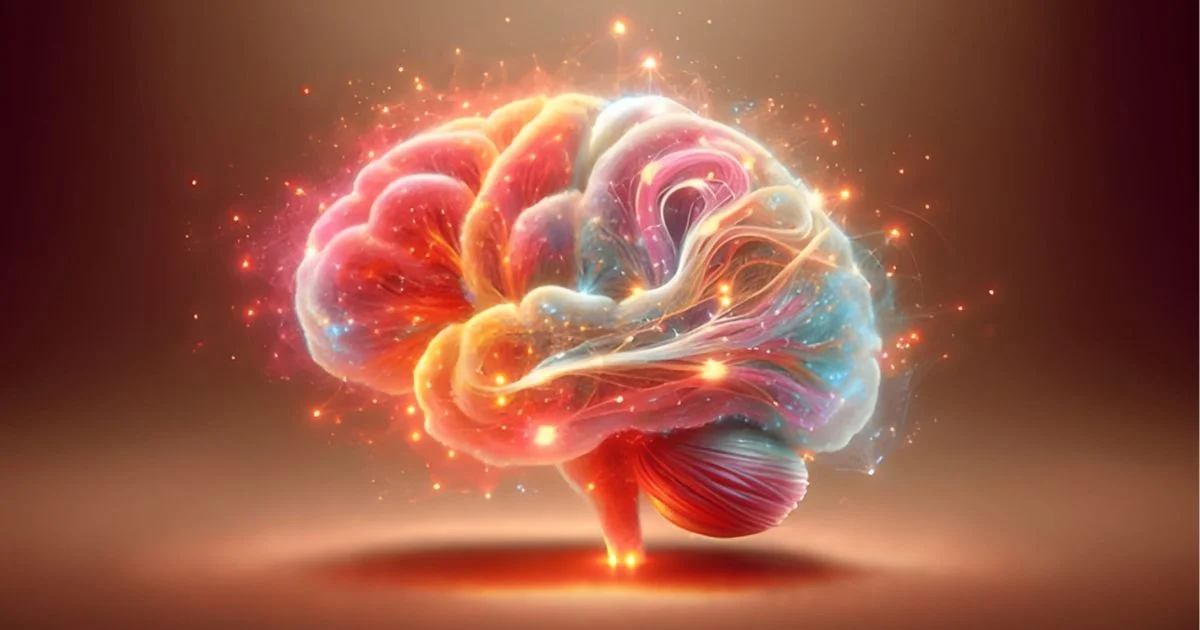Brain photons: Discovery of a natural light emission
Our brain never ceases to surprise us. After revealing its electrical waves and magnetic fields, it unveils another secret: it emits light. Researchers have detected photons—those tiny particles of light—escaping from the heads of volunteers placed in complete darkness. Invisible to the naked eye, this ultra-weak glow intrigues scientists because it appears to vary with mental activity. Is it merely a by-product of metabolism, or a signal that could tell us more about how neurons operate? This discovery opens a new field of research and, in time, may offer a new way to observe the human brain.
An unexpected light at the heart of life
We have long known that some living beings produce visible light, like fireflies or certain deep-sea fish. Science has also shown that, in reality, all organisms emit light—far fainter and invisible to the naked eye. Researchers refer to this as ultra-weak photon emission (UPE). These photons are generated by the chemical reactions that power our cells. When a molecule transitions from an excited state to a stable one, it releases a photon—a tiny burst of light.
This emission is extremely weak and requires sophisticated instruments to detect. Nevertheless, it accompanies cellular life continuously. The more energy a cell consumes, the more photons it releases. Because the brain is by far the most energy-hungry organ—nearly 20% of our total energy for only about 2% of our body mass—it is considered the body’s main “photon source.”
Until recently, this remained a theoretical assumption. Photon emissions had been measured from isolated cells in the laboratory, but never directly at the scale of the human brain. Thanks to new detectors capable of counting just a few light particles per second, scientists have now observed this ultra-weak radiation outside the skull. In other words, our neurons give off light, even if our eyes cannot perceive it. This is precisely what the team led by biophysicist Nirosha Murugan at Wilfrid Laurier University in Canada demonstrated by placing volunteers in total darkness and recording the photons escaping from their heads with ultrasensitive detectors.
Twenty participants took part in the experiment. Their heads were surrounded by a setup combining electroencephalography to measure electrical brain activity and photon sensors to detect even the faintest light. The detectors focused on the occipital lobes, involved in vision, and the temporal lobes, related to hearing. The results leave little room for doubt: the human brain does emit photons, and these emissions, although faint, can be distinguished from ambient light noise.
🔗 Read also: Your Quantum Brain: Where Neuroscience Meets the Edge of Reality
This discovery immediately raised a further question: does the brain’s light vary with its activity? When the researchers compared electrical and photonic data, the two did not perfectly overlap. Light intensity did not simply track peaks in neuronal firing. Still, one intriguing observation emerged: when a participant switched tasks, the detected light fluctuated, as if the transition from one mental state to another produced a subtle change in photon emission.
This tentative link feeds a long-standing scientific debate. Nearly a century ago, Russian biologist Alexander Gurwitsch suggested that biophotons might contribute to cellular communication and influence growth. His experiments were never confirmed, but modern research is beginning to revisit the idea. In the case of the brain, two positions are now in tension. Skeptics point out that the intensity of these photons is so low that an active role in cognition seems unlikely. Optimists argue that it is premature to dismiss the possibility that a faint light signal could play a part in circuits as complex as neuronal networks. In any case, detection itself could become a valuable tool, alongside the electrical and magnetic signals used today to explore brain activity.
🔗 Explore further: Magnetic sparks for the brain: A new frontier in the battle against Alzheimer’s
How light navigates the brain
If the existence of cerebral light is now established, another question follows: how do these photons travel through the different layers of the head? Before reaching the detectors, they must cross the skin, skull, cerebrospinal fluid, and brain tissue. To clarify this, a team at the University of Glasgow designed an original experiment. They applied a pulsed laser beam to a volunteer’s head, carefully covered with opaque fabric to prevent interference, and then examined whether light could be detected on the other side with a photomultiplier. The photons did pass through this series of biological obstacles, confirming that light can travel within brain structures, although not along a straight path.
The results show that each layer deflects and scatters photons in its own way. Skin, cell membranes, fluids, and bone act as surfaces for reflection and refraction, somewhat like what happens in a fiber-optic cable. Depending on where the laser is applied, photons take different routes: they can skirt the top of the brain, pass beneath the hemispheres, or reach deeper regions when entering through the temples. This property opens an unexpected perspective: the trajectory of light could provide information about the thickness or structure of the tissues it crosses.
These observations strengthen the idea that cerebral light is not just a biological curiosity but also a measurable and potentially informative signal. By understanding how it propagates, scientists could design tools capable of revealing aspects of the brain’s internal organization, including in regions that remain difficult to access with today’s noninvasive techniques.
🔗 Discover more: When AI thinks like a brain
Photoencephalography: A new window on the mind
These discoveries are more than scientific curiosities; they could transform how we observe the brain. Today, researchers already rely on several powerful tools. Electroencephalography measures electrical activity at the scalp. Magnetoencephalography records the magnetic fields generated by neurons. Functional MRI maps blood flow to identify active regions. Near-infrared spectroscopy yields information about oxygenation in superficial tissues. Each method has strengths, as well as limitations related to cost, accessibility, spatial resolution, or depth.
Detecting brain photons could complement this arsenal. The idea is to develop a new technique—photoencephalography—that would use the brain’s naturally emitted light as a direct and completely noninvasive signal. If refined, this approach might offer a simpler and potentially less costly alternative to some current technologies while providing new information about brain dynamics. Even if the biological function of these photons remains uncertain, recording them could become a reliable indicator of shifts in neural activity.
Beyond technological promise, there is a philosophical dimension. Learning that the brain literally shines, however faintly, changes how we picture it. This radiation may not be a mere energetic curiosity; it could become a new key to exploring one of the body’s most mysterious organs.
References
Casey, H., DiBerardino, I., Bonzanni, M., Rouleau, N., & Murugan, N. J. (2025). Exploring ultraweak photon emissions as optical markers of brain activity. iScience, 28(3), 112019.
Radford, J., Gradauskas, V., Mitchell, K. J., Nerenberg, S., Starshynov, I., & Faccio, D. (2025). Photon transport through the entire adult human head. Neurophotonics, 12(2), 025014.








